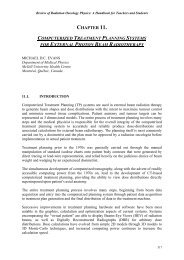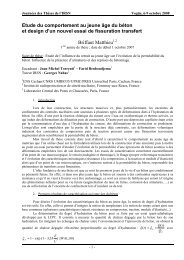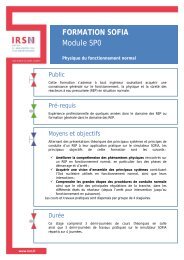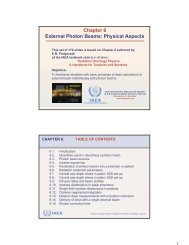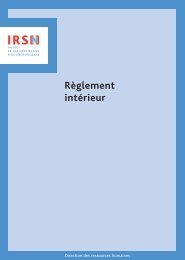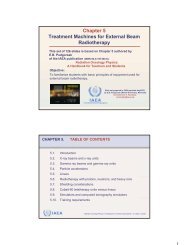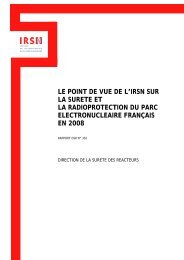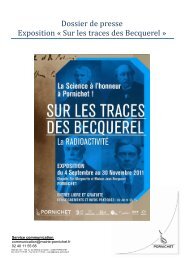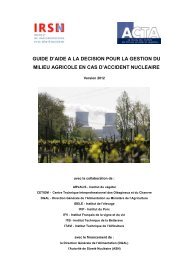chapter 2. dosimetric principles, quantities and units - IRSN
chapter 2. dosimetric principles, quantities and units - IRSN
chapter 2. dosimetric principles, quantities and units - IRSN
Create successful ePaper yourself
Turn your PDF publications into a flip-book with our unique Google optimized e-Paper software.
Chapter <strong>2.</strong> Dosimetric Principles, Quantities <strong>and</strong> Units• Multiplying the collision kerma by ( e/W )air, the number of coulombs of chargecreated per joule of energy deposited, gives the charge created per unit mass of airor exposure:X( K )⎛e⎞=col air ⎜ ⎟Wair⎝⎠. (<strong>2.</strong>29)• The relationship between total kerma <strong>and</strong> exposure is obtained by combiningEq. <strong>2.</strong>25 <strong>and</strong> Eq. <strong>2.</strong>29 to get:Kair⎛W⎝ e⎞air= X ⎜ ⎟⎠11−g. (<strong>2.</strong>30)<strong>2.</strong>8 CAVITY THEORYIn order to measure the absorbed dose in a medium, it is necessary to introduce a radiationsensitive device (dosimeter) into the medium. Generally, the sensitive medium of thedosimeter will not be of the same material as the medium in which it is embedded. Cavitytheory relates the absorbed dose in the dosimeter sensitive medium (cavity) to the absorbeddose in the surrounding medium containing the cavity. Cavity sizes are referred to as small,intermediate or large in comparison with the ranges of secondary charged particles producedby photons in the cavity medium. If, for example, the range of charged particles (electrons) ismuch larger than the cavity dimensions, the cavity is regarded as small. Various cavitytheories for photon beams have been developed depending on the size of the cavity, such asthe Bragg-Gray <strong>and</strong> Spencer-Attix theories for small cavities <strong>and</strong> the Burlin theory for cavitiesof intermediate sizes.<strong>2.</strong>8.1. The Bragg-Gray cavity theoryThe Bragg-Gray (B-G) cavity theory was the first cavity theory developed to provide arelationship between absorbed dose in a dosimeter <strong>and</strong> the absorbed dose in the mediumcontaining the dosimeter.• The conditions for application of the Bragg-Gray cavity theory are:(1) the cavity must be small when compared with the range of charged particlesincident on it so that its presence does not perturb the fluence of chargedparticles in the medium;(2) the absorbed dose in the cavity is deposited solely by charged particlescrossing it, i.e., photon interactions in the cavity are assumed negligible <strong>and</strong>thus ignored.The result of condition (1) is that the electron fluences in Eq. (<strong>2.</strong>22) are the same<strong>and</strong> equal to the equilibrium fluence established in the surrounding medium. Thiscondition can only be valid in regions of CPE or TCPE. In addition, the presenceof a cavity always causes some degree of fluence perturbation that requires theintroduction of a fluence perturbation correction factor.50



